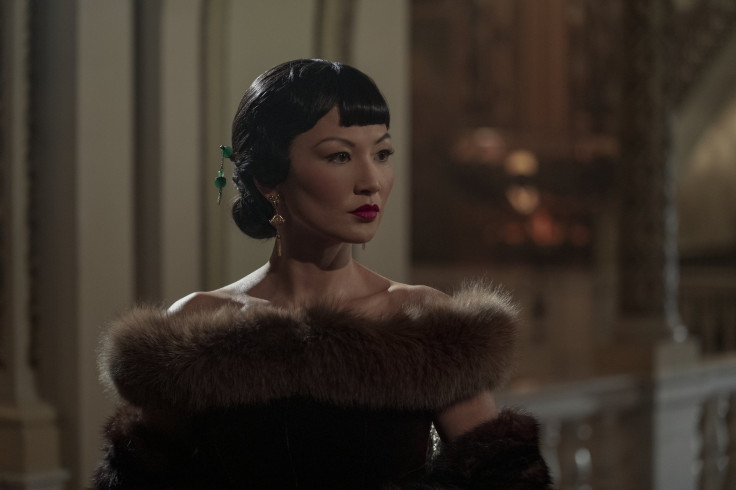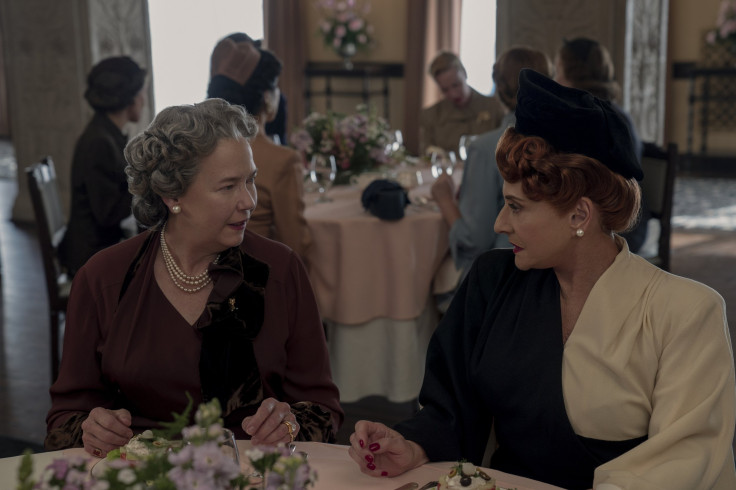Is Netflix’s ‘Hollywood’ Based On A True Story? 11 Real Historical Figures Appearing
Netflix’s “Hollywood” blurs the lines between fact and fiction. Set in the golden age of Hollywood, the series follows an alternate history where a female studio head allows much more diversity earlier on. Though the seven-episode Netflix original is not based on a true story, many of the characters involved really did exist in real-life.
Rock Hudson (Jack Picking) is, of course, one of the most famous actors from this era. He was gay, but he never came out. His sexuality wasn’t public knowledge until he died of AIDS-related complications at age 59 in 1985. “Hollywood” imagines what his life might have been like if he didn’t stay in the closet at the beginning of his career.
Henry Willson (Jim Parsons) was Rock Hudson’s agent, and Netflix shows his dark side. Robert Hofler's book “The Man Who Invented Rock Hudson: The Pretty Boys and Dirty Deals of Henry Willson” also portrays Willson as the godfather of Hollywood. He reportedly could make or break careers, had no problem getting someone roughed up and expected his clients to perform sexual favors.
“Henry Willson was a real-life villain, and that role was very heavily researched,” executive producer Ryan Murphy says in Netflix’s press materials. “Wilson was a true sexual predator and an alcoholic who would take these young men who were vulnerable and from bad homes, who came to Hollywood trying to make it, and then sexually abuse them. It's a very tricky thing when you're writing a monstrous character like Henry Willson, because you may not like what they do, but I want you to understand why they're doing what they're doing. Nobody just becomes a monster. Monsters are made.”

Guy Madison (Anthony Coons) briefly appears as another one of Willson’s famous clients.
Tallulah Bankhead (Paget Brewster) is only shown briefly, which is surprising since it sounds like her life is the perfect material for “Hollywood.” The actress was an outspoken liberal and is rumored to have had romantic affairs with men and women.
Vivien Leigh (Katie McGuinness) is a minor character in “Hollywood,” but she was indeed the real actress who played Scarlett O’Hara in “Gone With The Wind.” She struggled with mental health issues, which explains the show’s references to her “episodes.”
Anna Mae Wong (Michelle Krusiec) is widely considered to be the first Chinese American movie star, and "Hollywood" starts off with her true story. Wong really did lose out on the role of a Chinese character in “The Good Earth” to white actress Luise Rainer, who won an Oscar for her role.

George Cukor (Daniel London) only makes a couple of quick appearances, but his parties are a big part of the storyline. Those were reportedly very real. Cukor hosted soirees for all the closeted Hollywood players, including the likes of Vivien Leigh and Noël Coward.
Noel Coward (Billy Boyd) briefly appears as trying to hook up with fellow writer Archie (Jeremy Pope) for the night at a Cukor party. The playwright was not out publicly, but his longtime partner discussed his sexuality after his death.
Eleanor Roosevelt (Harriet Sansom Harris) was, obviously, a real historical figure. In the fictional “Hollywood,” she helps rally to get “Meg” into production, and in real life, Roosevelt was vocal that she felt movies should have freedom of speech.

Hattie McDaniel (Queen Latifah) was the first black Oscar winner for “Gone With The Wind,” and she was supposedly bisexual (though obviously never came out officially).
“One of the first questions Ryan asked me was, ‘What would happy endings look like for Rock Hudson, for Anna May Wong, for Hattie McDaniel?’ It was important to us that we tell an aspirational story, and that we show a different kind of portrait of what the winners and dreamers look like,” executive producer Janet Mock said.
“Because today, we’re still grappling with an industry where there are far too few people of color on screen, far too few LGBTQ people and women in power. We wanted to show what Hollywood could be today if, back in the 1940s, a movie like Meg had been made and rewarded. It would have reverberated and pushed culture forward in the same way that Black Panther and Moonlight have. But still, even now, we deal with two steps forward, five steps back.”
Peg Entwistle doesn’t technically appear, but it is her story that serves as inspiration for “Meg,” the movie being made in the TV show. Both Samara Weaving and Laura Harrier’s characters are vying to play the actress who became infamous for dying by jumping off the Hollywood sign.
Meanwhile, the other leading characters aren’t directly adapting historical figures, but executive producer Ryan Murphy made it clear to Entertainment Weekly that there was some serious inspiration.
Camille (Laura Harrier) is an amalgamation of two black actresses from the era, Lena Horne and Dorothy Dandridge. Dick Samuels (Joe Mantello) is loosely based on MGM producer Irving Thalberg. Avis Amberg (Patti LuPone) was inspired by both the first female studio president Sherry Lansing (heading 20th Century Fox starting in 1980) as well as theater producer Irene Selznick, the daughter of producer Louis B. Mayer and wife of producer David O. Selznick.
All 7 episodes of "Hollywood" are available now on Netflix.
© Copyright IBTimes 2025. All rights reserved.





















